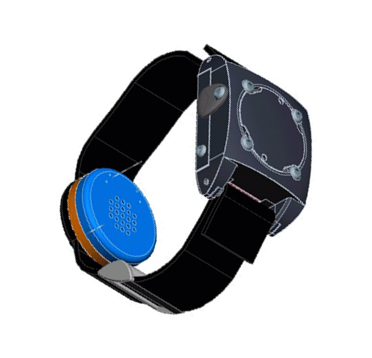Sensors & Diagnostics
Giner’s Sensors and Diagnostics Department focuses on converting advanced sensor technologies and diagnostic solutions into practical applications across various industries. Our work encompasses environmental monitoring, molecular diagnostics, and personal health tracking, contributing to advancements in public safety, healthcare, and environmental sustainability.
Molecular Diagnostics
Adapting traditional benchtop assays for point-of-care diagnostics that focus on novel biological targets of interest to the healthcare community.
Personal Monitoring
Prototype wearable devices to continuously measure biological targets.
Featured Program
THC Sensor for Quantitative Detection
Under funding from the USDOT and NIH, Giner is developing electrochemical sensors for the direct detection of THC in saliva and breath, bypassing the technical hurdle of attempting to miniaturize analytical instrumentation, and eliminating the false positives that can occur with immunoassay based tests.Success Story
Alcohol Sensor Technology Transfer to Market
Giner developed a wearable transdermal alcohol sensor branded as WrisTASTM to detect alcohol vapor perfusing from the skin. Giner sold the technology to a leading alcohol monitoring company in a cash and stock deal valued at $25M.
Featured Program
THC Sensor for Quantitative Detection
Under funding from the USDOT and NIH, Giner is developing electrochemical sensors for the direct detection of THC in saliva and breath, bypassing the technical hurdle of attempting to miniaturize analytical instrumentation, and eliminating the false positives that can occur with immunoassay based tests.Success Story
Alcohol Sensor Technology Transfer to Market
Giner developed a wearable transdermal alcohol sensor branded as WrisTASTM to detect alcohol vapor perfusing from the skin. Giner sold the technology to a leading alcohol monitoring company in a cash and stock deal valued at $25M.




Capabilities
Sensor Fabrication (Screen Printing, Spray Coating, etc.)
Surface Modification
Electrochemical Testing and Characterization
Prototyping and Machining (3D Printing, CNC, etc.)
Precision Cutting (Laser and Die Cutting)
Cell Culture and Biochemical Testing
Analytical Validation (LCMS, Ion Chromatography, etc)
Optical Characterization (SEM and Optical Microscopy)
Analog Device Prototyping
Biosafety Level II Laboratory
